On June 2, 2016, Laurence Garvie woke to a thrilling text message: “Large bolide.”
In the early hours of that morning, a bolide—a large, bright meteor—had exploded through the atmosphere of northeastern Arizona, near where Garvie works as the curator for the Center for Meteorite Studies at Arizona State University.
“Meteorites are falling all over the Earth all the time,” he says, but “every once in a while, a meteorite lands, so to speak, in your backyard.”
Garvie and his team rushed to the site to hunt for the meteorites. It is estimated that 10 meteorites fall to Earth every day, but researchers only find about 10 per year. The space rocks are easiest to spot when they fall on relatively stable geographic environments, like the Arizona desert, and the team doesn’t have to use metal detectors. In 2016, they hunted with their eyes, scanning the ground for anything that looked out of place in the landscape. Over the course of several days, the team discovered about 15 meteorites.
[Looking for some urban stardust? Check the roof.]
“These are precious, old objects. These are objects that [give] us an insight into the early solar system, so we need a place to keep them safe,” says Garvie. “The Center for Meteorite Studies is that place…This is a meteorite vault around us.”
Humidity control keeps the metallic meteorites from rusting in Earth’s oxidizing atmosphere, and the particularly air-sensitive ones remain safely ensconced under dry nitrogen. Then, researchers like Garvie can examine the meteorites’ characteristics and chemistry, and study their isotopes and structures, in order to glean information about the space rocks. These meteorites—whose origins lie in asteroids and other celestial bodies like the moon and Mars—are messengers from space. In studying them, scientists can catch a glimpse of the worlds beyond our atmosphere.
“What we’re trying to do is piece this all together to really unravel the early solar system stories,” says Garvie.
Let’s peek behind the doors to the vault and take a look at these different stones from space—and the stories locked within them.
Iron Meteorites
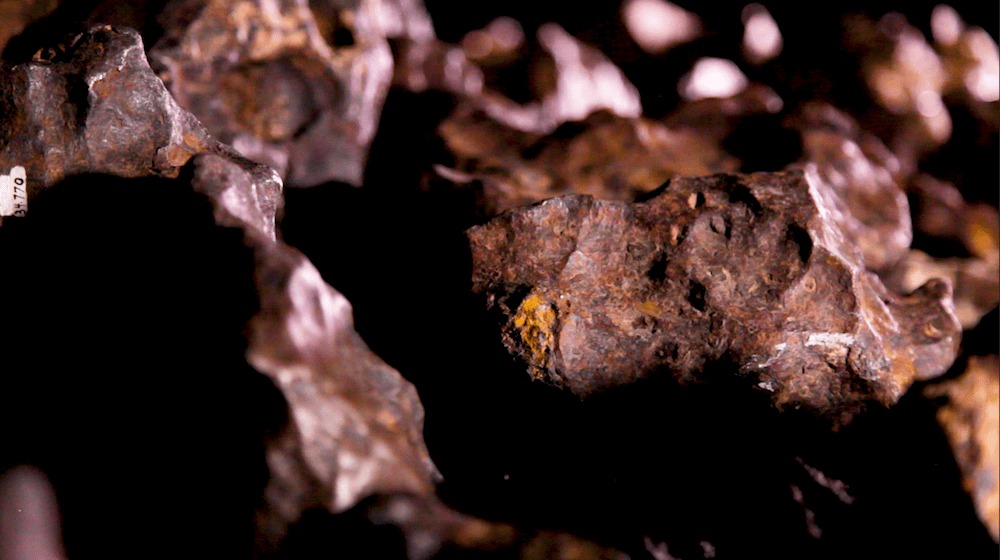
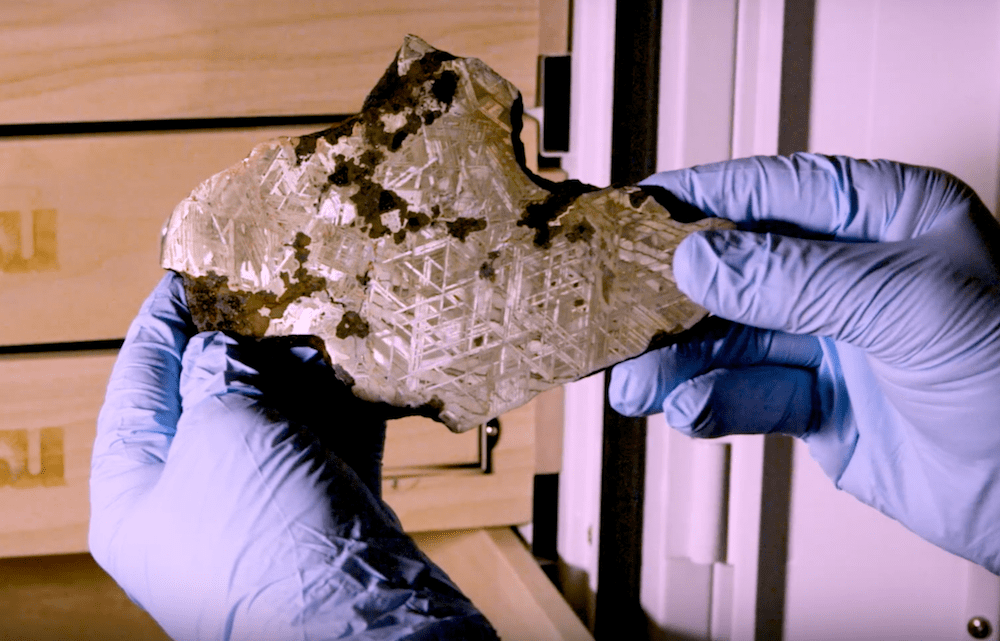
Composition: Iron meteorites are the cores of early asteroids—and they’re also some of the most recognizable, explains Garvie. That’s because iron is rarely present on Earth’s surface; it usually turns to rust after oxidizing in the atmosphere.
The Story They Tell: The early solar system was full of potential planets, asteroids, and moons—but not all of them made the cut. Iron meteorites are what these failed celestial bodies left behind. “What we’re seeing are remnants of the cores of [early] asteroids, and so they’re telling us about core formation processes [of early planets].”
Chondrites
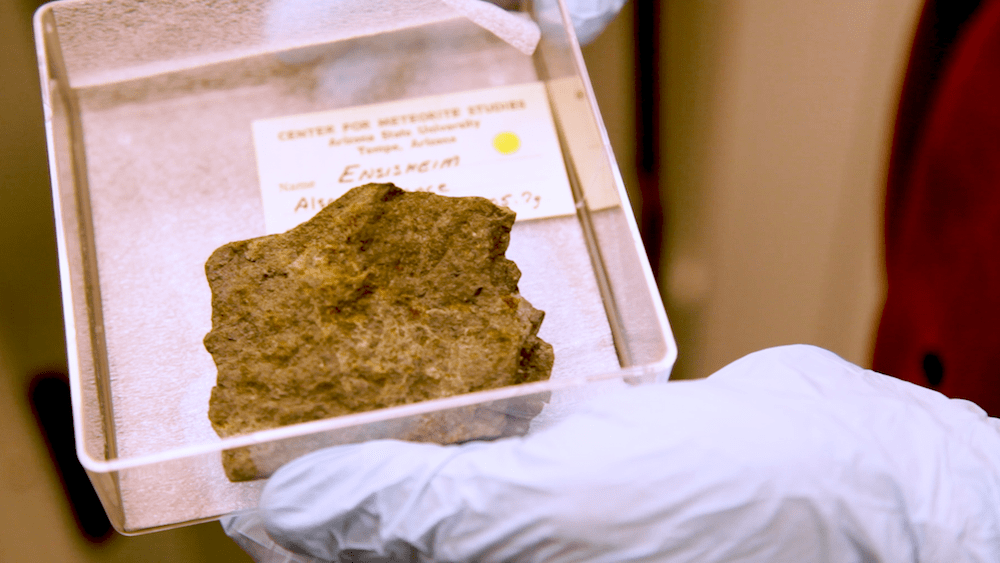
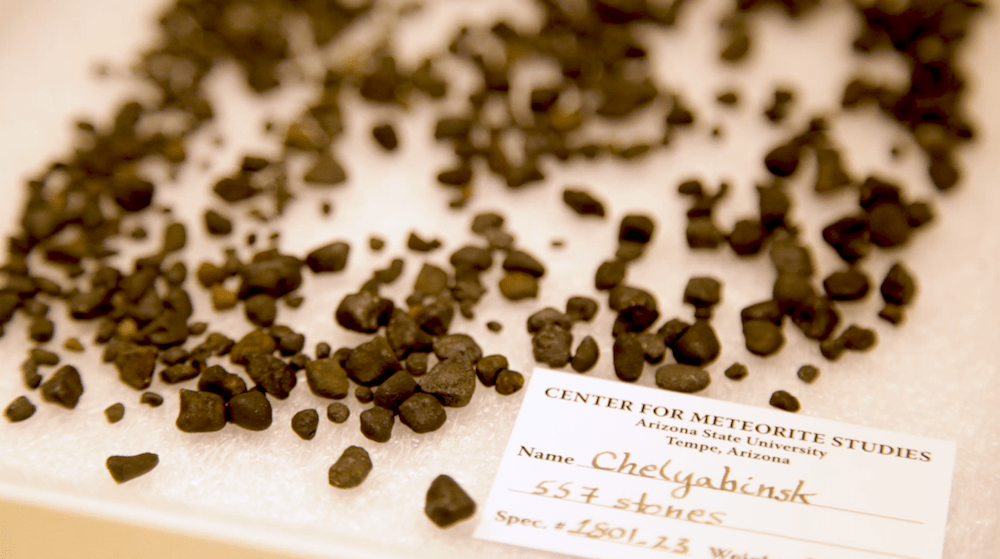
[A closer look at the sands of Earth, and beyond.]
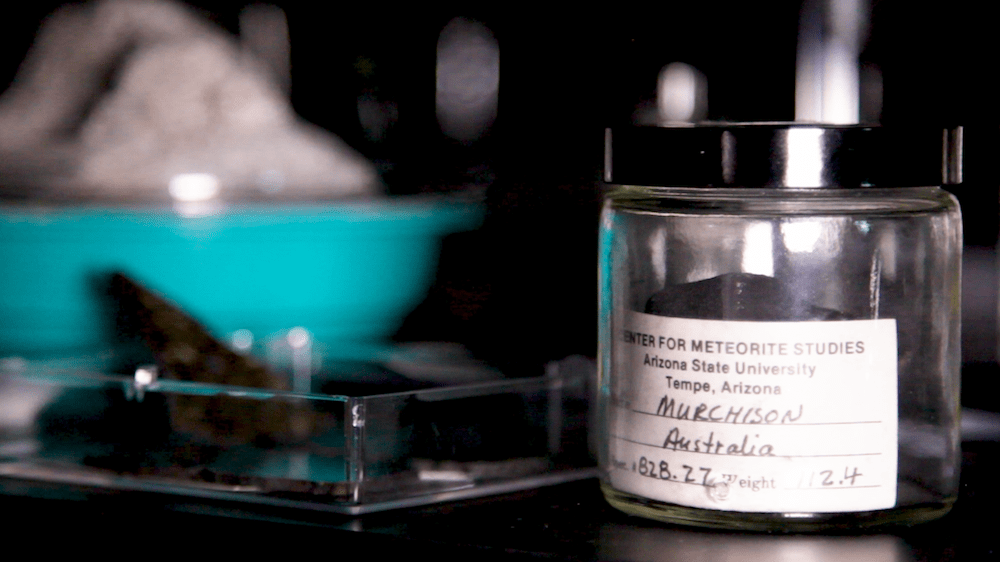
Composition: Chondrites are a collection of early solar system dust that has not been modified by a heating process. When scientists cracked open the Murchison meteorite, which fell in Australia in 1969, and scraped the material on the inside, they discovered that it was black, indicating that it was chock-full of carbon and organic materials. It also smelled odd—the New York City subway may come to mind, a metallic scent with musty and bitter hints to it. “It’s got a slightly aromatic smell to it. What you’re smelling are these four-and-a-half-billion-year-old organic compounds that are still evolving from the sample,” says Garvie.
The Story They Tell: “They really tell us about the most primitive, early solar system material,” says Garvie. As for the carbonous Murchison meteorite? “That was telling you that the building blocks of life can form in outer space,” says Garvie.
Achondrites
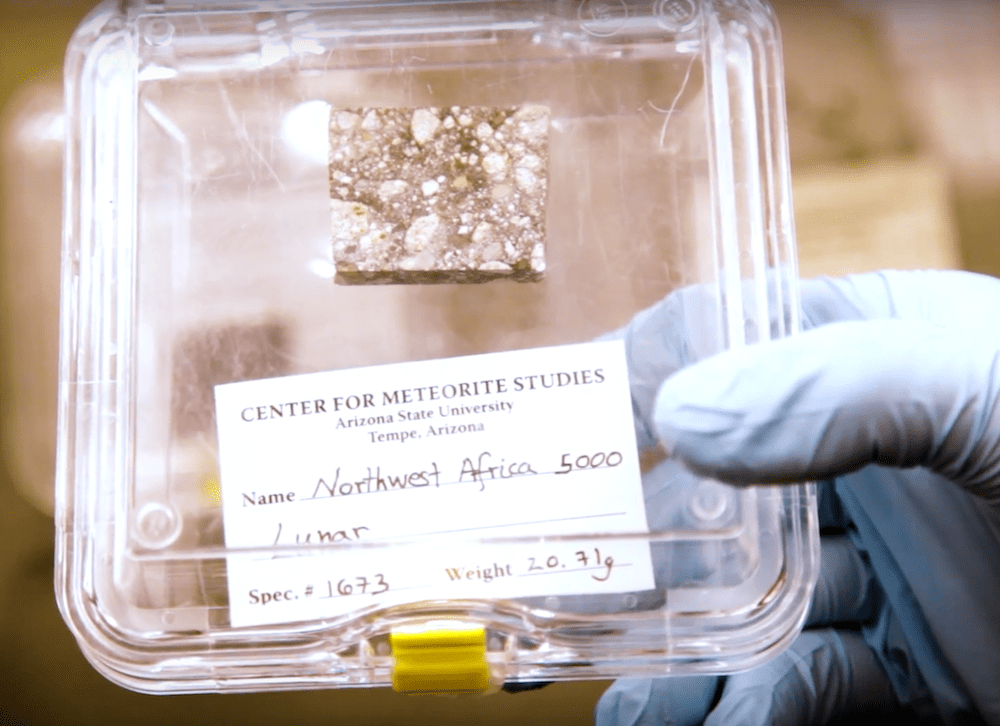
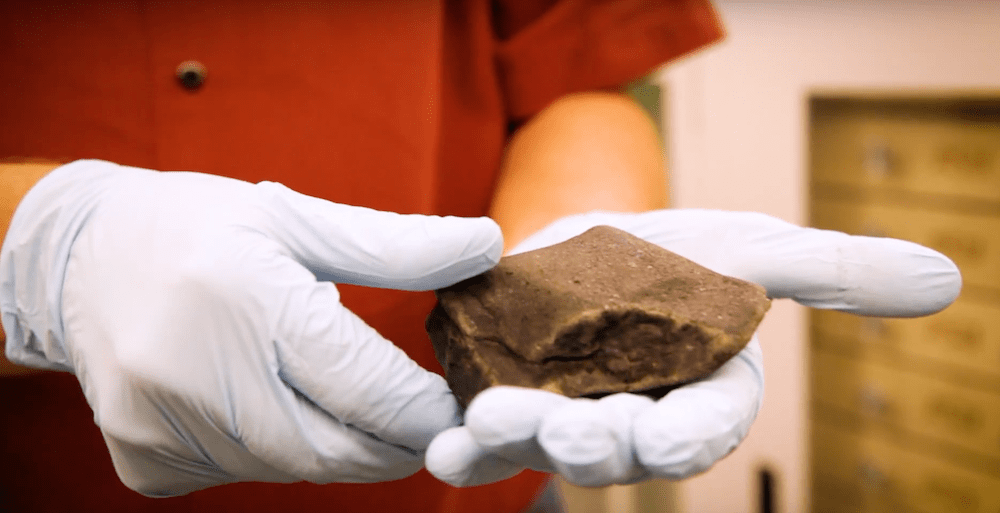
Composition: Achondrites can be tough to identify because they’re highly reminiscent of the materials closer to home home: “They can be very difficult at times to distinguish from the crystalline rocks that we find here on Earth, and require much more intensive [scrutiny], usually a laboratory study, to distinguish them from terrestrial rocks,” says Garvie. In fact, he says, scientists can almost never identify them based on hand samples alone, unless it features a fusion crust, or the glassy surface that results from melting.
The Story They Tell: Most meteorites come from the asteroid belt, and they tell us about the early solar system. But achondrites have a different origin story: They come from the moon and from Mars. They help us learn about the surfaces and geological processes on both those bodies.
Pallasites
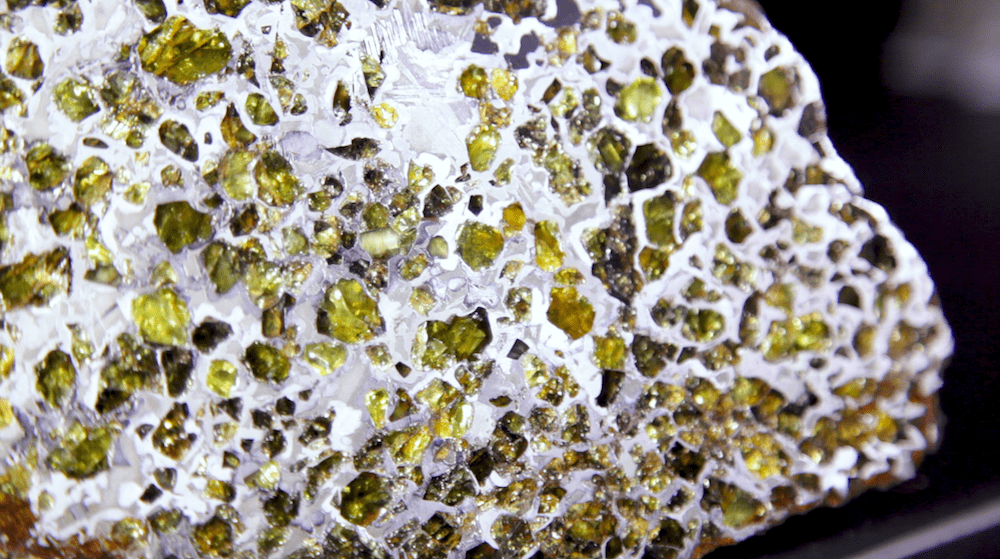
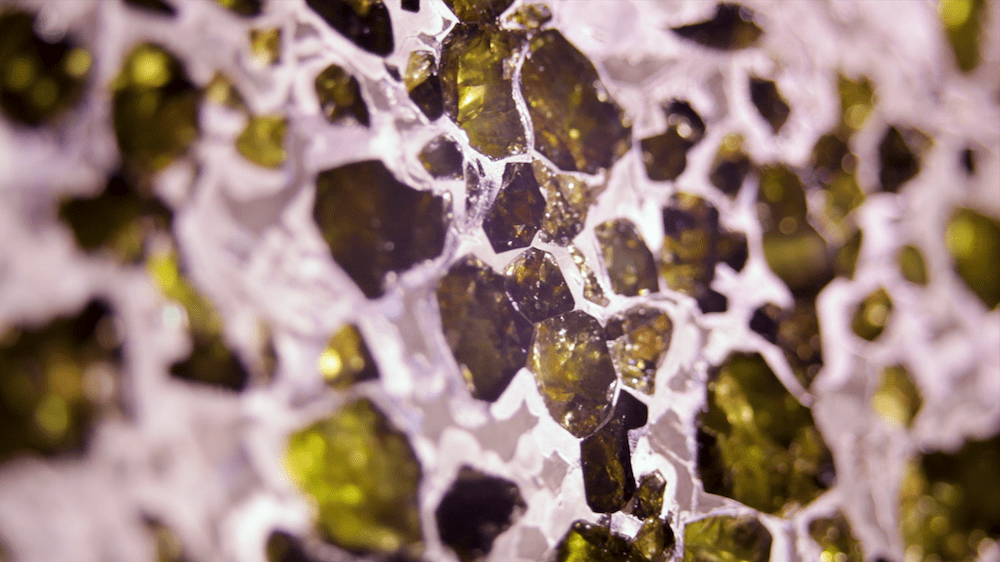
Composition: Made of stony iron, “some of the most beautiful meteorites that we have are called pallasites,” says Garvie. “If you look at them, there’s this beautiful sea of gemmy green peridot crystals in a metal matrix.”
The Story They Tell: These stunning space rocks likely originate from the area nestled between the core and the outside of an asteroid. Because they originate at this boundary, these glittery stones reveal information about the conditions in that specific area—and the stories from places beyond our reach.
Credits
Meet the Producers and Host
About Emily Driscoll
@emilyvdriscollEmily Driscoll is a science documentary producer in New York, New York. Her production company is BonSci Films.
About Johanna Mayer
@yohannamayerJohanna Mayer is a podcast producer and hosted Science Diction from Science Friday. When she’s not working, she’s probably baking a fruit pie. Cherry’s her specialty, but she whips up a mean rhubarb streusel as well.